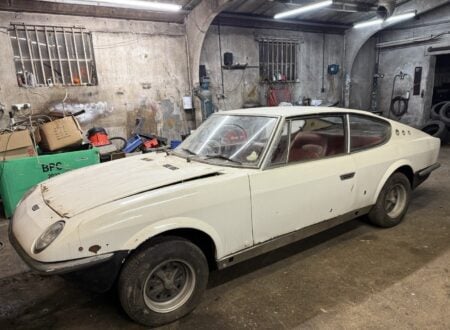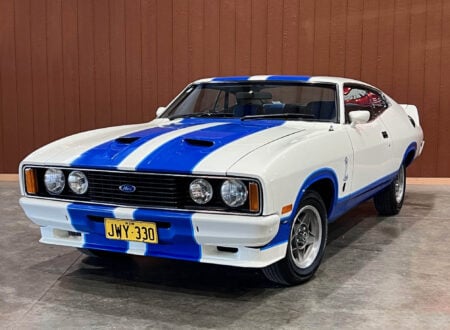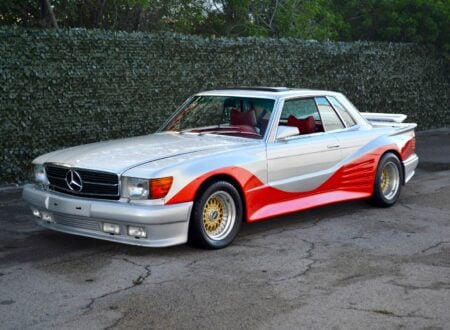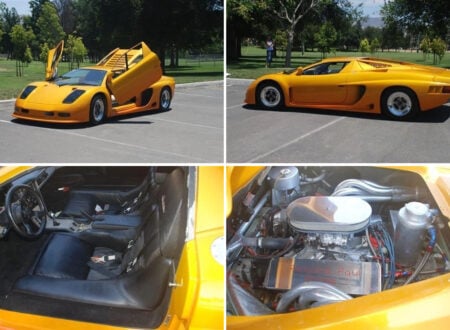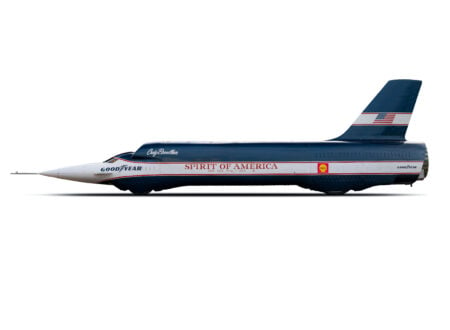This is a fully-restored Alfa Romeo 1900 M “Matta” from 1954. It’s a little-remembered 4×4 today and is perhaps most notable for the fact that it won its class in the 1952 Mille Miglia – a daring 1,000 mile road race across Italy.
The Matta was developed as a period-competitor for the Willys Jeep and Land Rover, but in true Alfa Romeo style it was fitted with advanced independent front suspension and a double overhead cam engine with hemispherical combustion chambers, producing more power than either the Jeep or Land Rover.
Fast Facts: The Alfa Romeo 1900 M “Matta”
- The Alfa Romeo 1900 M “Matta,” developed in the early 1950s, was Alfa Romeo’s answer to the Willys Jeep and Land Rover, featuring advanced independent front suspension and a sophisticated 1.9 liter double overhead cam engine. Originally designed for military use, the Matta combined racing-inspired engineering with excellent off-road capabilities.
- Approximately 2,007 military units (AR 51) and 154 civilian units (AR 52) were produced between 1952 and 1954. Despite positive reviews, including its impressive climbing ability (120% gradient) and capability in extreme temperatures, it ultimately lost its military contract to Fiat’s Campagnola due to cost considerations and parts availability.
- Mechanically, the Matta stood out with its high-performance twin-cam engine, 5-speed gearbox, selectable four-wheel drive, and locking front and rear differentials. These features, some of which were rare in off-road vehicles of its era, provided excellent off-road performance, a 70 cm wading depth, and superb agility when the going gets rough.
- A Matta won its (military vehicle) class in the prestigious 1952 Mille Miglia race, shocking many at the time. Today, surviving examples are highly sought after by collectors due to their rarity, historical significance, and technical sophistication.
The Alfa Romeo 1900 M “Matta”
The Alfa Romeo 1900 M “Matta” is a little-known (but historically significant) four-wheel-drive that was developed by Alfa Romeo in the early 1950s. Originally built for the Italian military, the Matta (Italian for “mad” or “crazy”) was Alfa’s response to the Italian government’s call for a light reconnaissance and utility vehicle in the mold of the American Willys Jeep and the then-still-relatively-new Land Rover Series I.
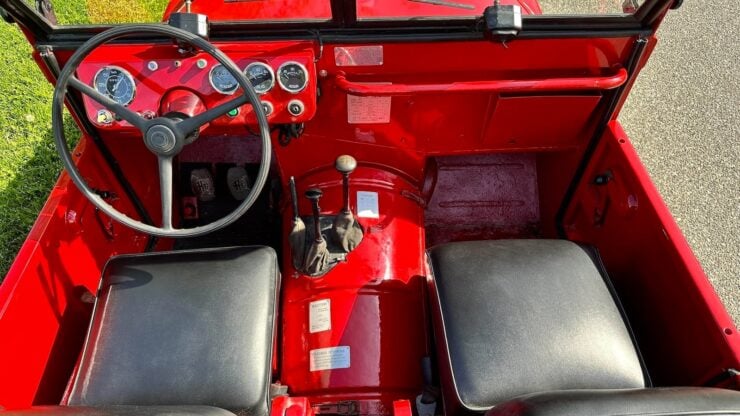

Though production of the Matta was short-lived and its military contract ultimately went to a competitor, the Matta remains a fascinating example of Alfa Romeo’s mid-century engineering applied to off-road use rather than high-performance sports cars or out-and-out Grand Prix racers.
The 1900 M Matta was introduced in 1951 following a request from the Italian Ministry of Defense for a multi-purpose light utility vehicle suitable for military use. Alfa Romeo’s entry was the AR 51 (Autovettura da Ricognizione, or “Reconnaissance Vehicle”), with a civilian variant named the AR 52.
In total, approximately 2,007 AR 51 models were built for the military between 1952 and 1954, alongside an additional 154 AR 52 units for civilian use.
The Alfa Romeo Matta: Specifications
Mechanically, the Matta was a unique offering. At its core was a detuned version of Alfa Romeo’s advanced 1.9 liter twin-cam inline-four engine from the 1900 Berlina, a sedan introduced in 1950. In the Matta, this engine produced 65 bhp at 4,400 rpm, sufficient to push the vehicle to a top speed of roughly 105 km/h (65 mph).
This engine used an aluminum alloy cross-flow head, double overhead cams, overhead spark plugs, and hemispherical combustion chambers – these were common features in high-end race cars but unheard of in off-road vehicles of the time.
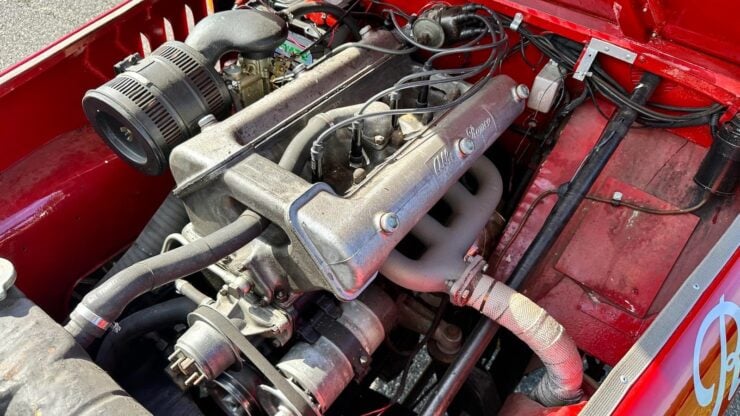

The drivetrain was configured with selectable four-wheel drive, a 5-speed manual gearbox with synchromesh on the upper four gears, and both front and rear differential locks. Its ladder-frame chassis was paired with independent front suspension and a live rear axle. The body was built with simplicity and field serviceability in mind, with a boxy, utilitarian shape and fold-down windshield using two flat glass panes – closely reminiscent of the Jeep it sought to rival.
The Matta’s off-road performance was praised in early military testing. It had a climbing ability of up to a 120% gradient, a wading depth of 70 cm (without preparation or a snorkel), and the ability to operate at temperatures ranging from –20°C to +50°C.
Ground clearance was 240 mm, and it featured a minimum turning radius of just 5.7 meters. These capabilities earned the Matta a good reputation among troops, and it was used by the Italian Army, particularly in Alpine and reconnaissance units that could take best advantage of its capabilities.
The End And A Surprising Race Win
Despite its obvious merits, the Matta’s military career was cut short. In 1954, the Italian Ministry of Defense opted to switch to the Fiat Campagnola, citing cost-effectiveness and parts commonality across the Fiat range.
Alfa Romeo, which had only recently been nationalized and was focused on rebuilding its peacetime production, did not fight hard to retain the contract. The decision effectively ended the Matta’s production run, and Alfa Romeo did not pursue further off-road vehicles for military use thereafter.


The civilian version of the Matta, the AR 52, was largely identical in layout and mechanical configuration but included modest upgrades like a more finished interior and lighting for road use. Due to its limited production and high cost compared to more conventional vehicles, the AR 52 did not attract many civilian sales. Most examples were sold to public services such as forest rangers, emergency responders, and into some certain industrial applications.
Perhaps the most memorable achievement of the 1900 M “Matta” was the fact that one example was entered into the 1952 Mille Miglia, the famously perilous high-speed 1,000 mile race across Italy on unclosed, public roads. Amazingly, the Matta would win its class (military vehicles) and in so doing would mark its place in motor racing history forever.
Surviving examples of the Matta today are considered collectible due to their rarity, Alfa Romeo heritage, and their surprising technical sophistication by the standards of the 1950s. Restorations can be challenging due to the scarcity of original parts, particularly those unique to the Matta rather than shared with the 1900 sedan.
The Alfa Romeo 1900 M “Matta” Shown Here
The vehicle you see here is a 1954 Alfa Romeo 1900 M, making it one of the final versions before production ceased later that same year. This example benefits from a full restoration which is said to have taken place in Italy before it was imported into the United States – the engine was reportedly rebuilt by Alberto Dell’Orto.


It’s finished in red over a black interior, and under the hood you’ll find the advanced 1.9 liter Alfa Romeo engine that was capable of running rings around the power units in period competitors like the Willys Jeep and the Land Rover.
This Matta is now being offered for sale out of Southampton, New York by Aventura Motors with just 80 miles showing on the odometer since the restoration. If you’d like to read more about it or buy it you can visit the listing here.
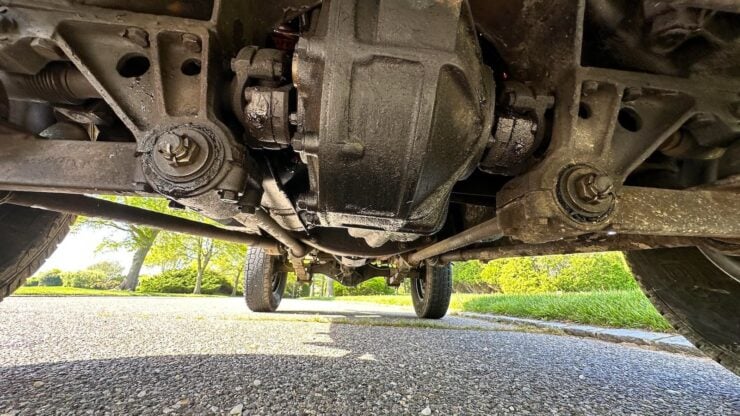
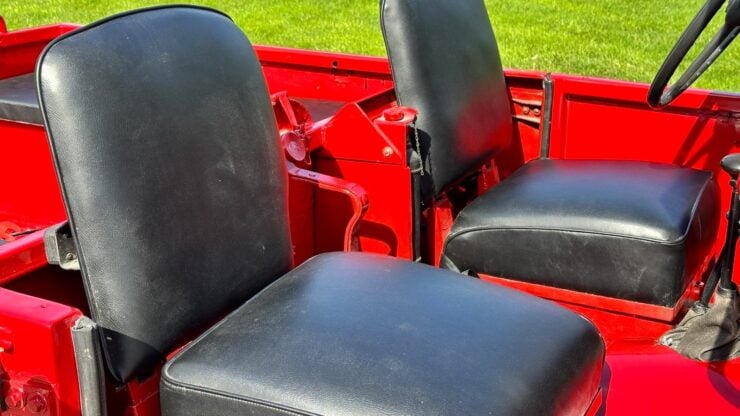
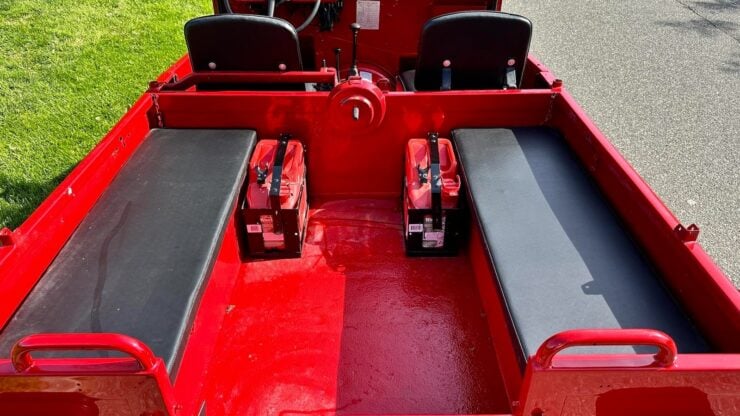
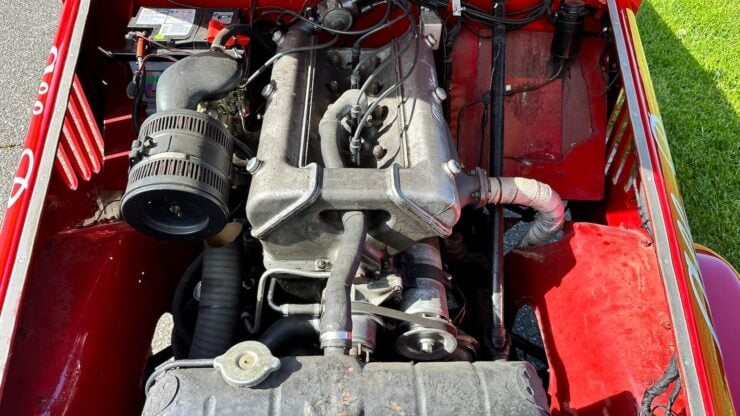

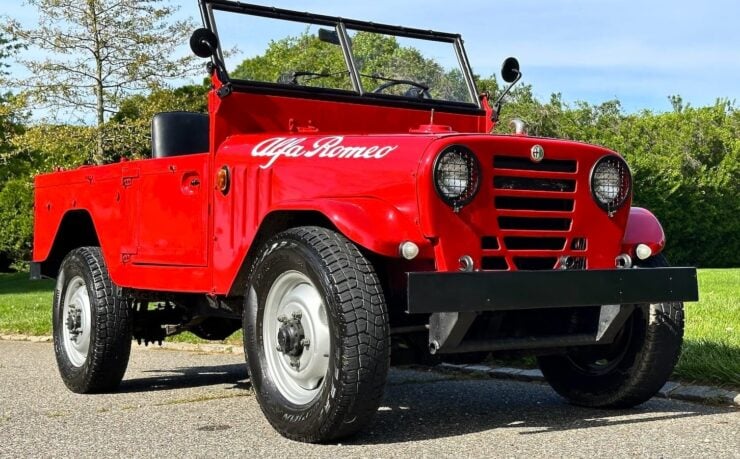



Images courtesy of Aventura Motors



